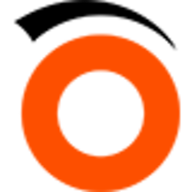

Zenoss Cloud and Grafana Enterprise Stack compete in cloud monitoring and analytics. Grafana Enterprise Stack has an upper hand due to its advanced visualization capabilities and extensibility, appealing to organizations focusing on visual data representation.
Features: Zenoss Cloud offers valuable features like real-time analytics, dynamic thresholding, and root cause analysis, ideal for businesses focused on infrastructure monitoring. Grafana Enterprise Stack features extensive customization options, powerful dashboards, and support for various data sources, making it suitable for complex data visualizations.
Room for Improvement: Zenoss Cloud could improve its flexibility, data visualization options, and integration capabilities. Grafana Enterprise Stack might enhance its deployment simplicity, ease of use for non-technical users, and reduce initial configuration complexity.
Ease of Deployment and Customer Service: Zenoss Cloud offers a streamlined deployment process for cloud environments, backed by proactive customer service. Grafana Enterprise Stack requires a more intricate deployment due to extensive configuration options but provides detailed guidance and robust support.
Pricing and ROI: Zenoss Cloud has a significant setup cost but promises strong ROI through comprehensive monitoring solutions. Grafana Enterprise Stack, though initially expensive, justifies its price with flexibility and potential to deliver detailed insights through exceptional data visualization and configurability.
| Product | Market Share (%) |
|---|---|
| Grafana Enterprise Stack | 1.2% |
| Zenoss Cloud | 0.7% |
| Other | 98.1% |


| Company Size | Count |
|---|---|
| Small Business | 6 |
| Midsize Enterprise | 1 |
| Large Enterprise | 6 |
| Company Size | Count |
|---|---|
| Small Business | 4 |
| Large Enterprise | 5 |
Grafana Enterprise Stack is a powerful tool for real-time data monitoring and visualization. With its flexible and scalable features, it is widely used for creating dashboards, analyzing metrics, and gaining insights into infrastructure, databases, and applications.
Its valuable features include powerful visualization capabilities, extensive data source integrations, customizable dashboards, a user-friendly interface, and a robust alerting system. Users appreciate its flexibility, scalability, and ability to integrate with different data sources, making it suitable for a wide range of industries and use cases.
We monitor all IT Infrastructure Monitoring reviews to prevent fraudulent reviews and keep review quality high. We do not post reviews by company employees or direct competitors. We validate each review for authenticity via cross-reference with LinkedIn, and personal follow-up with the reviewer when necessary.